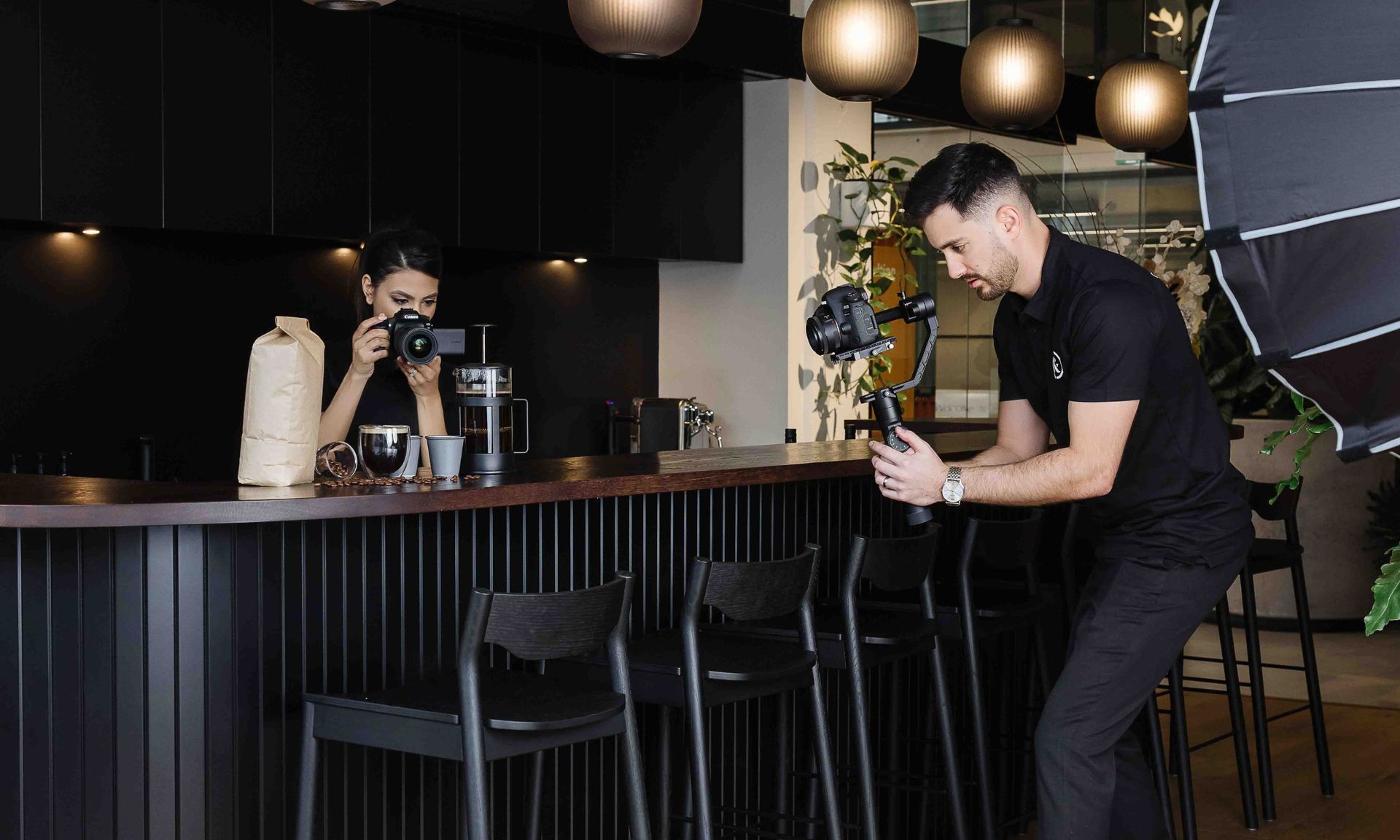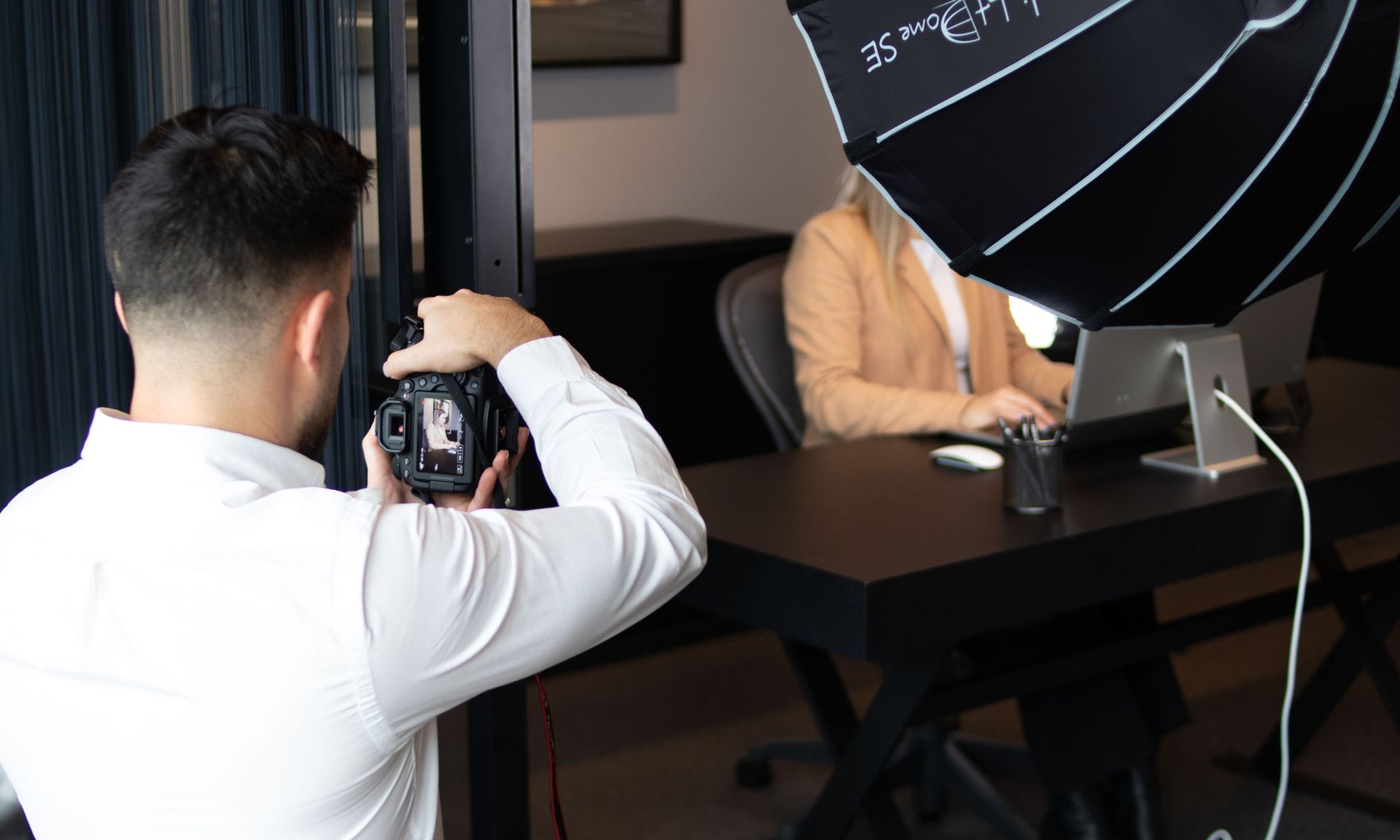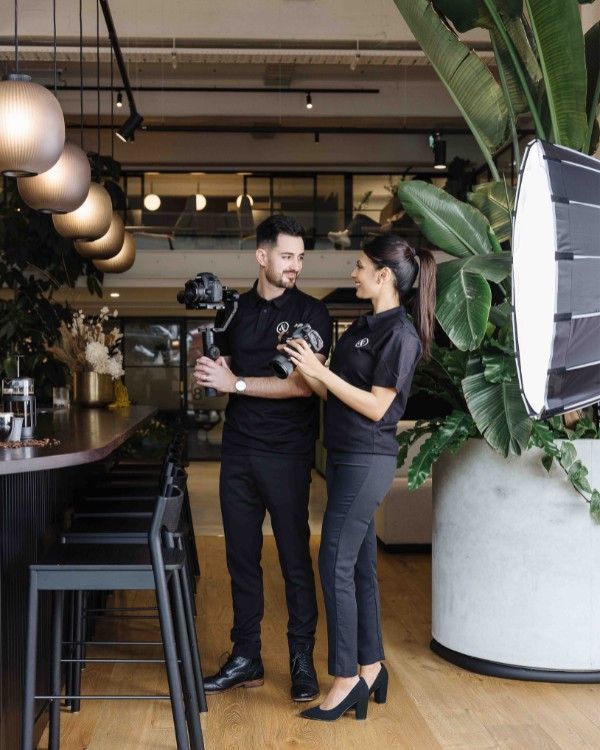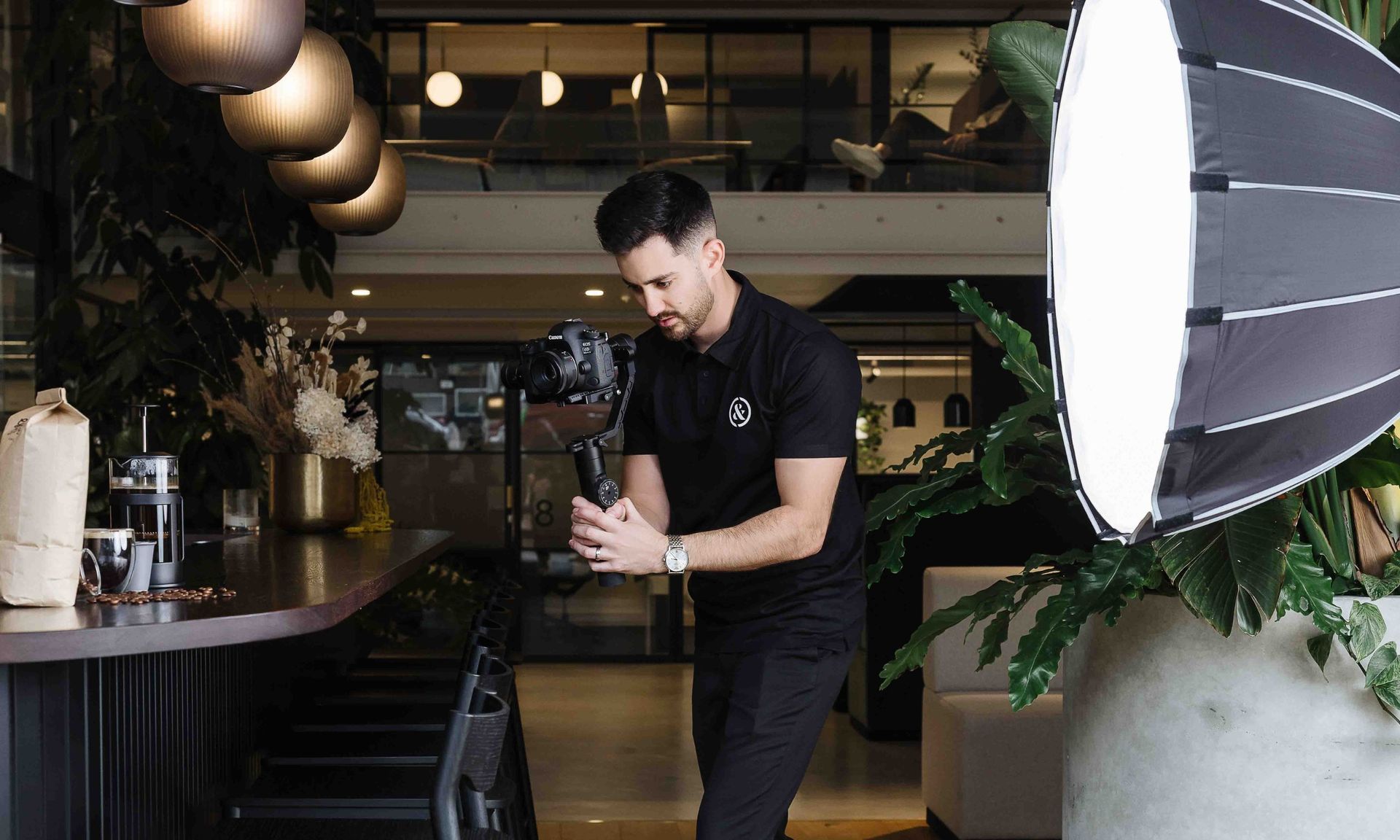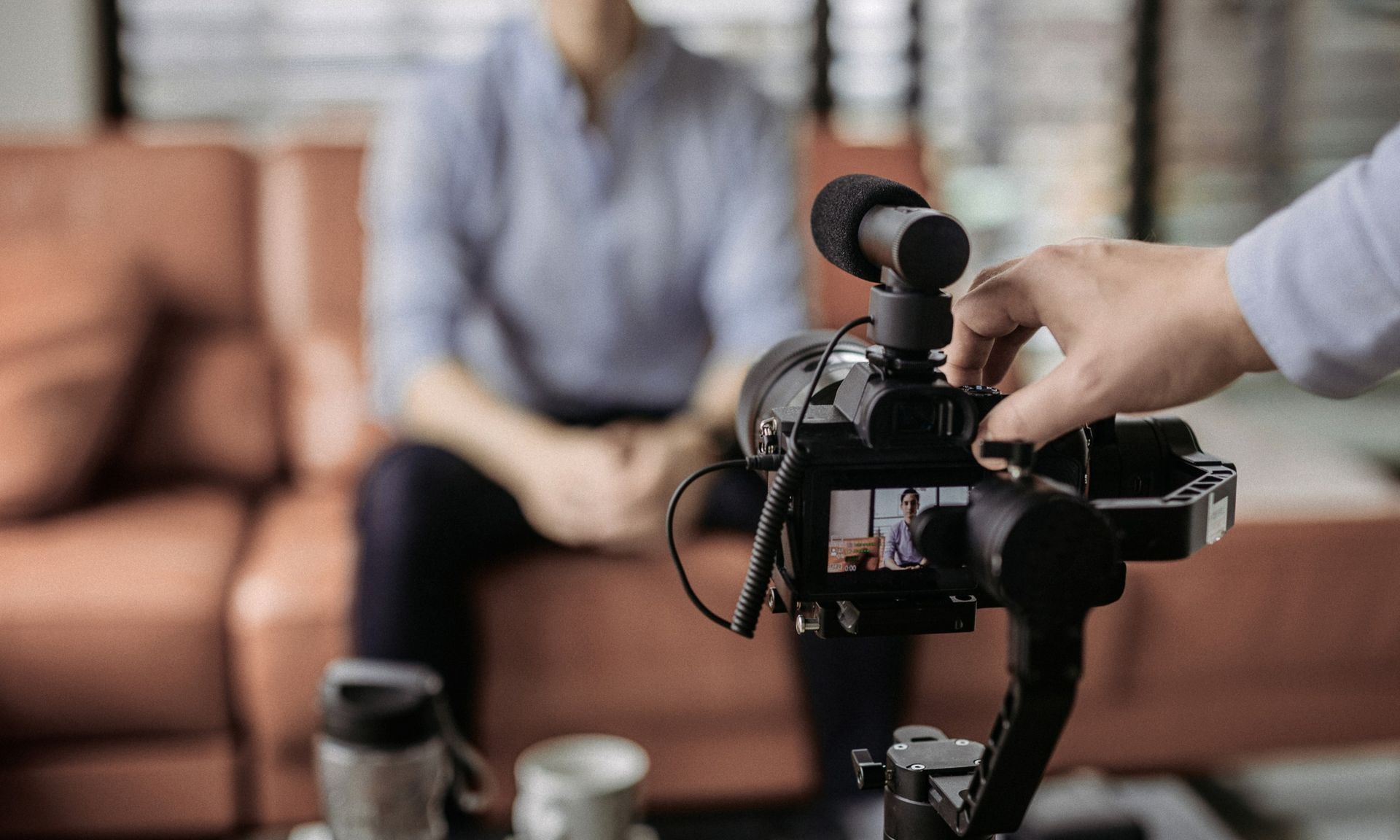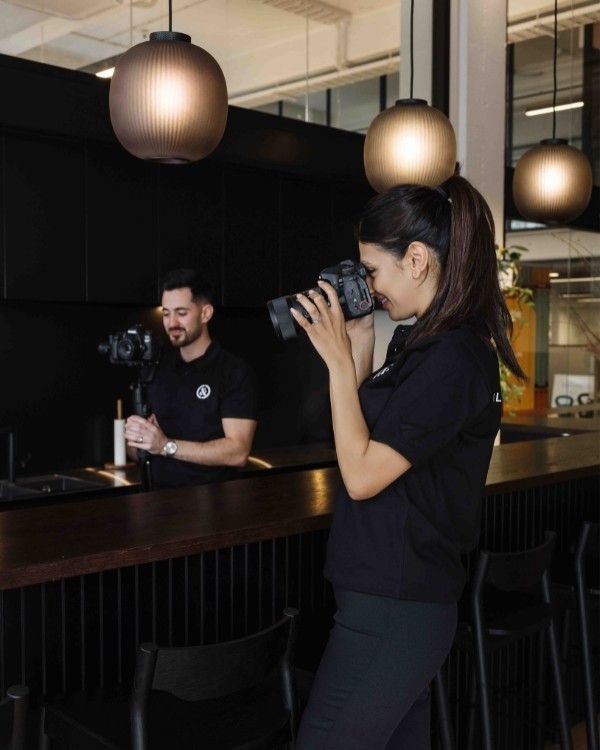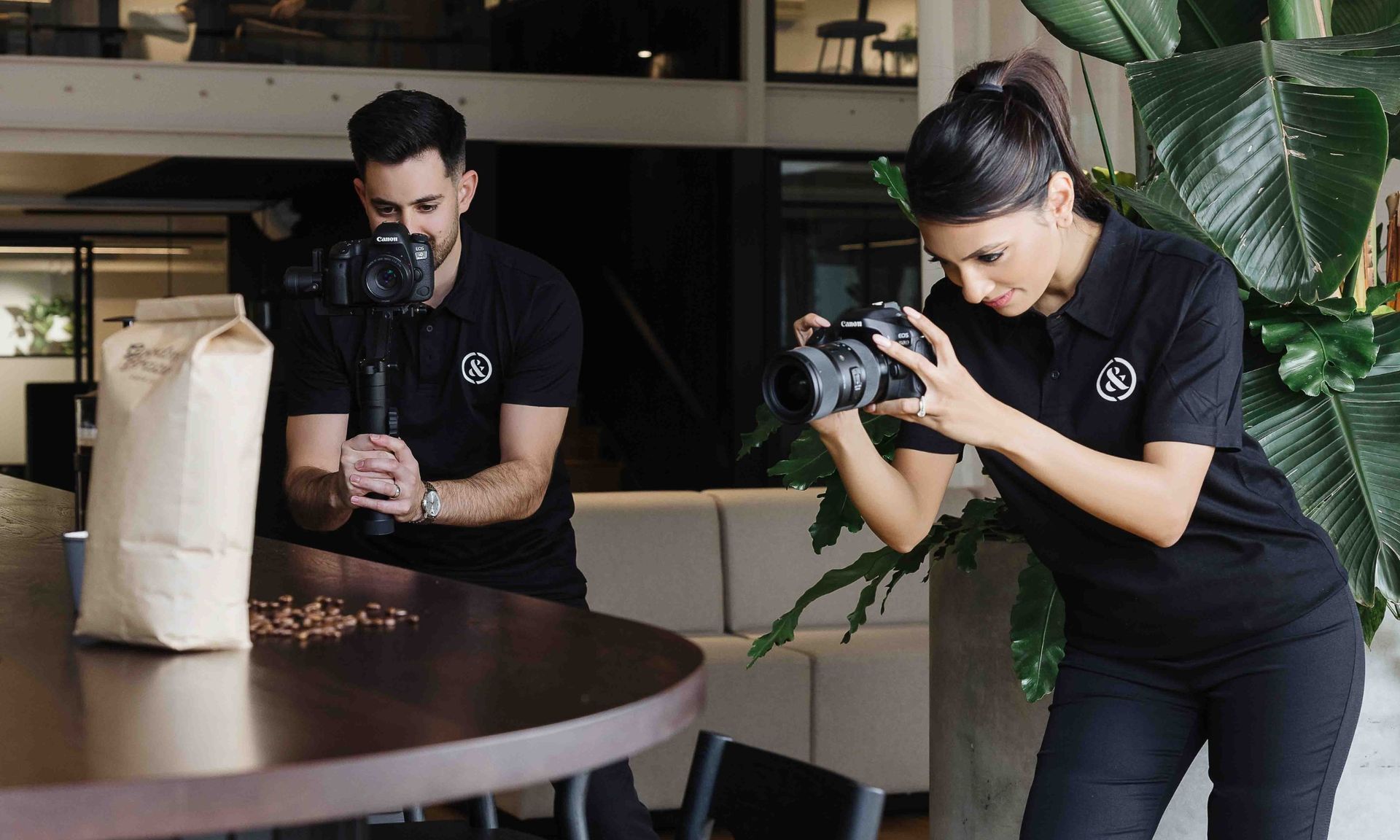What to say in your first video | Tips for SMB owners
What to say in your first video: Tips for SMB owners
Video is one of the most effective ways to connect with your audience, but knowing what to say in that very first clip can stop even the most passionate business owner in their tracks. You know your offering, you know your customers, but translating that into a clear, confident message on camera often feels like unfamiliar territory. The truth is, you don’t need a perfect script or a rehearsed delivery to create a great first video. You just need to know what matters to your audience and how to say it in a way that feels like you. That’s exactly what this article will help you do.
ARTICLE CONTENTS
What this article will cover
Not sure where to begin? Use the guide below to explore key tips and common challenges that come with creating your first marketing video. Each section is designed to help you feel more confident about what to say and how to say it.
Why your first video matters more than you think
A look at why your first on-camera message plays such an important role in building trust and connection with potential customers.
Common mistakes when creating your first marketing video
This section outlines the most common challenges business owners face when filming their first video and why they’re so easy to fall into.
How to craft a clear and confident video message
We explore how to shape your message so it feels focused, natural, and aligned with your brand tone.
Simple scripting tips for small business owners
Practical advice on how to prepare what you want to say, without over-rehearsing or sounding too formal on camera.
When to ask for help: scripting vs. strategy support
Not sure if you should DIY or get support? This section helps you understand when to bring in guidance and what kind of help makes the biggest difference.
Why your first video matters more than you think
When someone clicks on your first video, they’re not just watching to learn about your business. They’re deciding whether they trust you. In a few short seconds, your tone, body language, and message give viewers a sense of who you are and whether your business is worth their time. That’s why your first video does more than introduce your service, it starts building a relationship.
When someone clicks on your first video, they’re not just watching to learn about your business. They’re deciding whether they trust you. In a few short seconds, your tone, body language, and message give viewers a sense of who you are and whether your business is worth their time. That’s why your first video does more than introduce your service, it starts building a relationship.
Video has become one of the most effective ways to capture attention online, and audiences increasingly expect to see the people behind the brand. In fact, nearly 9 in 10 consumers say they want to see more video from brands they follow (Statista, 2024). That doesn’t mean your first clip needs to be perfect. It just needs to be clear, human, and relevant to your audience’s needs.
This matters even more for small to medium-sized businesses, where trust is a key part of the buying decision. If you’re the face of your business, people want to hear from you directly. A short, honest video can help them feel like they know you, and that familiarity builds confidence. So rather than thinking of your first video as a sales pitch, think of it as a handshake. It’s your first impression, and it’s worth getting right.
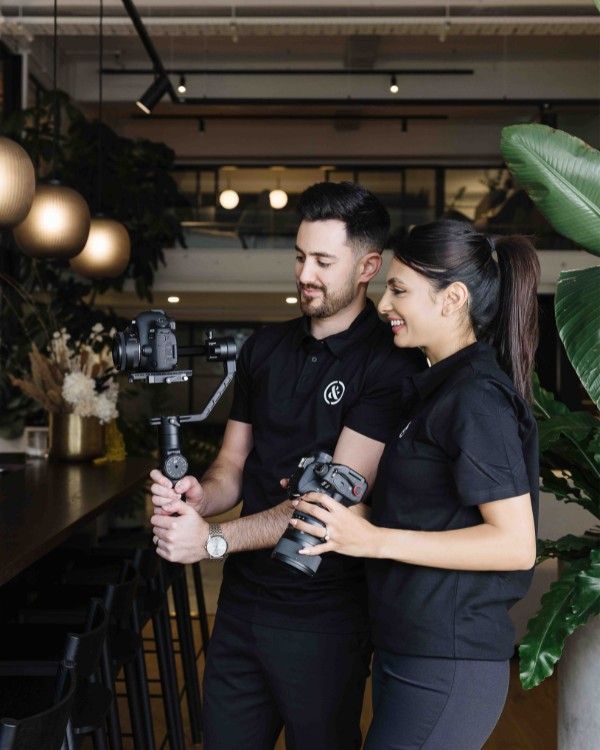
Common mistakes to avoid when creating your first marketing video
If you’ve never filmed a business video before, it’s easy to fall into a few common traps. Most of them come from overthinking. You want to sound polished, explain everything, and make the most of your moment on camera, but in doing so, it’s easy to lose clarity and connection.
Clear message
One of the most frequent issues is trying to say too much. Your first video doesn’t need to cover your full history, all your services, and your future goals in one go. In fact, it shouldn’t. Focus on one clear message, whether it’s introducing who you are, answering a common customer question, or sharing a short piece of advice. Simplicity makes your message more memorable.
Customer focus
It’s also important to make sure the message is for your audience, and not just about you. Many business owners focus on describing their services rather than addressing their audience’s needs. Before you film, take a moment to step into your customer’s shoes. What questions do they often ask? What would be most helpful for someone hearing from you for the first time?
Too scripted
Another common mistake is sounding too scripted or formal. If you write a full script and try to read it word-for-word, it often comes across as flat or robotic. People connect with natural language, not rehearsed lines. Instead, aim for an outline of what you want to say, and speak as if you were having a conversation with a potential customer.
Build confidence
Lastly, don’t let nerves dictate your delivery. Even experienced business owners can feel awkward on camera. That’s normal. But with a few takes, a simple structure, and a focus on clarity over perfection, confidence will come with practice. And if you’re still unsure, remember: short and genuine is far more effective than long and rehearsed (Think with Google, 2024).
How to craft a clear and confident video message
Before you hit record, the most important question to ask is: what’s the one thing I want my audience to remember? A strong video message isn’t about squeezing in every detail. It’s about delivering a single, focused idea in a way that feels clear, helpful, and true to your brand.
Before you start filming, it helps to follow a simple structure. One of the easiest and most effective approaches is:
Hook | Capture attention from the first few seconds
Start with something that speaks directly to your viewer. A common customer question, a short problem statement, or a relatable scenario can help them feel seen, and encourage them to keep watching.
Value | Share one clear takeaway
This is the heart of your message. Keep it focused. What’s one piece of advice, insight, or information your audience will find helpful? Don’t try to cover everything. Clarity builds confidence.
Action | Let people know what to do next
End with a simple next step. That might be visiting your website, booking a free call, or watching another video. A clear call to action helps keep the conversation going.
Speak to one person, not everyone
It also helps to think about who you’re really talking to. Picture your ideal client. What would they want to hear? What problem are they trying to solve? Speaking directly to that person, rather than a broad audience, makes your message feel more personal and relevant.
Match your tone to your brand
Tone is another important piece. A confident video doesn’t need to be loud or overly energetic. It just needs to sound like you. If your brand is warm and people-focused, let that come through in how you speak. If your style is more direct, keep it simple and efficient. The key is consistency. Your message should feel like a natural extension of how your business presents itself everywhere else (Business.govt.nz, 2023).
Clarity builds confidence
When you know what you want to say and who you’re speaking to, everything else becomes easier. You’ll feel more at ease, more focused, and less likely to second-guess yourself once the camera is rolling. Instead of worrying about what to say next, you’ll be able to speak with clarity and purpose, and that’s what makes your message resonate.
Simple scripting tips for small business owners
You don’t need to be a professional presenter to sound confident on camera. What you do need is a structure that helps you stay focused without sounding rehearsed. That’s where scripting can help, not to write out every word, but to give you a framework that keeps your message clear and natural.
(01)
Start by writing down a few key points you want to cover. Think of it as a bullet outline rather than a full script. This allows you to speak in your own words without worrying about memorising lines. Reading a full script often sounds stiff and can distance you from your audience.
Plan key points
(01)
Use language that feels like something you’d actually say in conversation. If a sentence feels too formal or overly complex, try to simplify it. Your viewers aren’t expecting a polished speech, what matters most is what they hear from the real person behind the business.
Natural language
(03)
Pacing also plays a role. Speak slowly enough for your audience to take in what you’re saying, but not so slowly that it feels unnatural. If you catch yourself using filler words like “um” or “you know,” that’s completely normal, they’ll become less frequent as you practice.
Watch your spacing
(04)
And finally, don’t feel you have to get it all in one take. Recording your video in small sections can make it easier to stay relaxed and in control. It also gives you space to reset between points if needed. The more you film, the more comfortable it will become.
Record in small sections
Scripting vs. strategy support
When to ask for help
There’s a point where DIY can only take you so far. If you’ve tried outlining your message, practising delivery, and recording a few takes but still feel stuck, it might be time to bring in support. Knowing when to ask for help isn’t a sign of weakness, it’s a smart step toward getting your message right.
For many small businesses, the biggest barrier to video isn’t the camera or the editing. It’s the strategy behind the message. You might know what you want to say, but not how to say it in a way that connects with your audience and aligns with your brand. That’s where working with a marketing team can make all the difference.
Support can come in a few different forms. You might need help refining your script so it sounds natural and on-brand. You might want someone to guide the structure of your video content over time, not just for a single clip. Or you might benefit from end-to-end video production, from strategy through to filming and post-production.
At Clarke & Clarke, we work closely with SMBs to make sure their video content feels authentic, focused, and aligned with their wider marketing goals. Whether you need help clarifying your core message or planning a full video campaign, our team brings the structure, direction, and creative support to make the process feel easy and effective.
Conclusion
Your first video doesn’t need to be perfect. It just needs to be clear, focused, and true to your brand. Whether you’re introducing yourself, explaining what you do, or answering a common question, your audience is looking for connection, not perfection. By starting with one core message, following a simple structure, and speaking in your natural tone, you can create a video that feels confident and professional without overthinking every word. The more you practice, the more comfortable it becomes. And once you’ve done one video, the next will feel a lot less daunting.
If you’re ready to show up on camera but want help shaping your message or planning a stronger video strategy, we’re here to support you.
Clarke & Clarke can help you script, film, and share video content that not only looks good, but gets results.
Frequently asked questions
If you're still unsure about what to say or how to get started with video, you're not alone. Here are a few quick answers to common questions we hear from small business owners.
What if I don’t like being on camera?
You’re not the only one. Start with short, simple videos where you talk directly to one customer or answer a common question. The more you practise, the more natural it becomes.
How long should my first video be?
Aim for 30 to 90 seconds. Keep it short, focused, and easy to follow especially if you're still building confidence in front of the camera.
Should I write a full script or just speak naturally?
A loose outline usually works best. It helps you stay on track without sounding too rehearsed. The goal is to sound like yourself, not like you're reading.
What if I make a mistake while filming?
That’s normal. You can either re-record that part or leave it in if it still feels clear and authentic. Small imperfections often make videos feel more real.
Can someone help me shape what to say?
Describe the item or answer the question so that site visitors who are interested get more information. You can emphasize this text with bullets, italics or bold, and add links.





